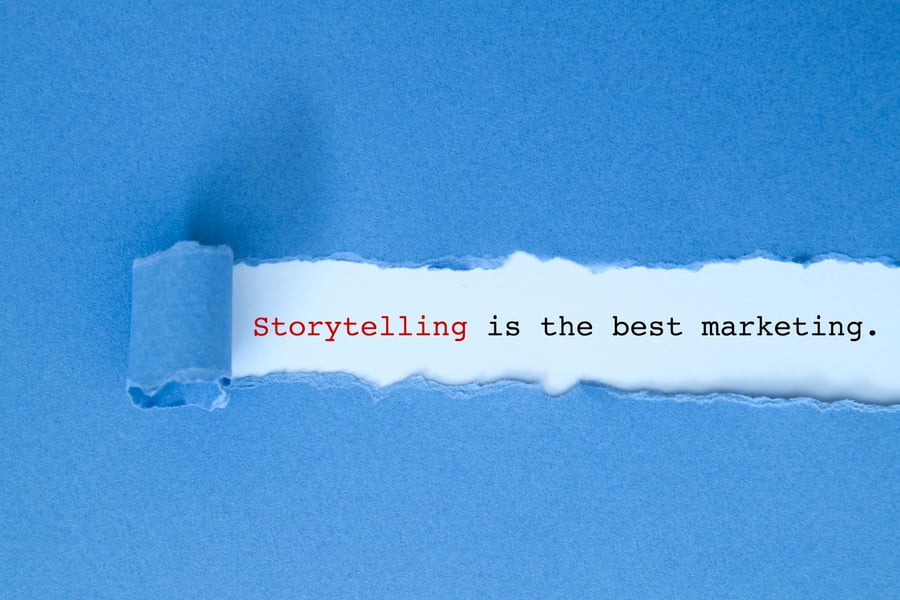
The world of eCommerce has provided a variety of small and medium-sized businesses the opportunity to compete with larger corporations and distribute their products all over the world with a nearly limitless customer base. However, there are certain drawbacks when businesses decide to do business almost exclusively online.
People can’t physically observe or touch your product, removing a certain level of customer engagement. Because of this, your customers may not know if product images are totally accurate, or that they’ll receive their purchase in a timely manner. This lack of confidence in your product can lead to delayed purchases and even abandoned carts. With the proper implementation of copy, however, you can open up an entirely new world of possibilities with your sales and marketing.
While your product images are important, some compelling copy will help you to tell a story regarding your product and company, and give your customers guidance in whatever they may be seeking to do with their purchase. By doing this, you not only establish yourself as an expert, but you also provide additional value to your customer that will attract them to other aspects of your business. There is also the pressure of making sure that your SEO specifications and metadata are properly set up, and that your copy is overall easy to read and find. After all, getting new customers may be somewhat difficult if your listings are buried in the weeds of Google.
Taking all of these factors into consideration, writing engaging, successful copy content can seem somewhat intimidating. However, you don’t need to be a complete copy expert to write meaningful, impressive, compelling content that increases engagement and overall sales. To give you an idea of where to start, here are some easy-to-follow, effective methods that will help you to spice up your content.
1. Be Mindful of Your Tone
Just like with any facet of marketing and branding, it’s important to keep your tone in mind for your copy. You want to keep in mind your target demographic, what you’re trying to sell to them, and how to cater to those specific people. For instance, trying to reach middle-aged moms is going to require a totally different voice from 18 to 25-year-old men. Remember, tone is the delivery mechanism to any message and can make or break how well it's received.
Testing is also a crucial part of developing any copy and honing your tone. After all, you don’t ever want to assume that someone will respond to something positively just because you do.
Here are some other rules of thumb to think about when developing your tone:
- More technical and education-based industries will require a higher focus on factual statements about your product and how it works. Keep away from overly “flowery” or unnecessary language when writing for this.
- Some universally unaccepted and alienating ways that you can set your tone include being energetic, elegant, and dependable. This will, naturally, change depending on what industry you’re focusing on.
- People want to know that you care about the product you’re providing. Make sure that you show off some of your expertise in your copy.
- Your blog is there to entertain as well as educate. Unless your article is all statistics and research, try adding a bit of personal flavor to your writing.
- Be as inclusive as possible in your language. Try avoiding references, jargon, and colloquialisms that your audience may not understand, even if you believe that it’s “common knowledge.” If you simply can’t avoid such descriptors, try explaining what they mean within the text.
- Try keeping your tone as positive and/or neutral as possible. Too much negativity does have the potential to turn people away from your content.
- Use appropriate metaphors in your product copy to inspire your audience with a single word about your product. It will help you inspire the audience regarding the product’s functionality.
2. Maintain a Clear Voice

To compare voice and tone, you must understand that the former is entirely more personal than the latter, and is a bit more difficult to modify. Voice is entirely about small, barely noticeable idiosyncrasies in how you communicate and is more about communicating as an individual rather than to one.
Maintaining a single, clear voice is important when writing copy, as it helps you to maintain a certain ethos throughout whatever you're penning, and helps the reader maintain a level of understanding. After all, would you want to read blog posts that sound like they’re coming from a bunch of different people that you don’t know and haven’t demonstrated any sort of expertise?
3. Make Your Product Benefits Clear
One of the primary functions of copy is to educate. This includes clearly communicating the benefit of your product. You can do this by articulating a pain point that your customer may have, and demonstrating why your product may help with it. One thing you certainly don’t want with your copy is a bunch of empty words that will quickly lose your customer’s interest taking up the space of a paragraph. Remember, it’s one thing to say that your product is an excellent solution for something. It’s something else to explain why.
Another way that you can make the cost/benefit analysis of your product clear is by comparing it to certain competitors. Your shoppers will almost certainly be comparing the specifications of certain products on their own, and will greatly appreciate it if you do it for them. Just make sure that your information is 100% accurate to avoid any potential liability. As long as your product is better where it counts, customers will flock to it.
4. Write Easy-to-Read Copy
Unfortunately, one way to permanently disengage any customer from your product is making your copy too long and difficult to read. While this includes a larger vocabulary than most of the population is used to, it also encompasses sentences that are too long and thoughts that don’t really go anywhere. Remember, people have a limited time to explore your store and product listings. You don’t want to have to make them waste their time or go through unnecessary work to understand your product and message.
Here are some ways that you can simplify your content:
- Avoid personal stories.
- Avoid repeating yourself.
- Manage your vocabulary.
- Be efficient with your words.
- Read up on best SEO practices.
- Make your content simple without talking down to your audience.
One important thing to keep in mind when writing good copy is that your blog is not a book. You might be telling a great story, but you do not necessarily want to be stuck writing (or reading) a sprawling epic. With all of that being said, we know that any retailer's eCommerce store is their pride and joy, and we encourage that you evoke that passion in your copy.
5. Write an Engaging Story

Another huge function of copy is to help you define your business story. People love to hear all about your triumphs and struggles, and how you managed to make your product so special in the first place. By crafting an engaging, easy-to-follow narrative, you are creating a whole experience surrounding your business that customers will love to partake in. By showing your human side, you also establish trust within your base and show exactly why your products are so unique and worth purchasing over your competitors’ in the first place.
While all industries can benefit from a good story, certain types of shops can benefit from it more than others. This includes food, child care, pet supplies, and clothing. Shoppers in these particular industries care about the values of those that they’re shopping from, and where they get their supplies. After all, if you were shopping for baby supplies, wouldn't you want to know that your retailer cared enough about the infants they were providing for to create and distribute a quality, safe product?
6. Present a Comprehensive Feature List
While communicating your story and what makes your products unique is important, you want to make sure that you have a proper balance of demonstrating the more practical elements of your products.
Your customers know what they want, and part of your job as a marketing expert is to make sure that they have access to the information they need. This means providing specifications and exact features of your products that they can easily and quickly check. Make sure that any listed features are easy to find and read. In other words, ensure that it’s not surrounded by too much fancy formatting or text and that you don’t have to go through too many links needed to actually get to it.
Whenever you’re providing a list of detailed pictures and specifications, always make sure that you’re as accurate as possible, and have a thorough understanding of what those exact numbers mean. It’s both important for the customer and seller, as the customer needs to be able to compare your product to certain competitors, and you need to accurately organize your stock.
A great way to demonstrate detail is by using infographics. Consider hiring an infographic designer to create captivating images for your content piece.
7. Use Powerful Sensory Language
Smooth, sizzling, buttery, crunchy, velvety, sharp-pitched, greasy — these are all powerful sensory-related words that can evoke a fairly powerful level of engagement from your reader. It stimulates their senses and provokes the positive (or negative) emotions that may be associated with them. This sort of language can be particularly useful when selling food items, which already provoke a sensory-related response in the customer’s mind. Of course, it can be used for a variety of industries and product descriptions, such as describing a plush blanket or spicy smelling soaps.
Some things to avoid when using sensory language are:
- Making the description too long
- Repeating yourself with certain phrases or words (they’ll get the point the first time)
- Using words that have a negative connotation associated with them (e.g. oily, prickly, gassy)
- Using words that don’t quite match up with what your product is actually like
Conclusion
Good copy is an excellent way to engage your audience and attract them to your shop. This is done by providing an entertaining, educational story about your business or product that engages with your audience on a fundamentally human level and will keep them coming back to your website.
When approached poorly, however, your writing can misrepresent your company, outright bore potential customers/clients, and detract from sales. With all of that being said, there’s absolutely no reason to fear copywriting. When done properly, it can even be an outright fun way to enhance your business. Just make sure that you absolutely avoid plagiarism, regardless of what you’re writing.
By following a few simple tips, you will soon be a copywriting expert that is capable of attracting a powerful audience and will be able to compete with a variety of businesses in search engines.




Leave a reply or comment below